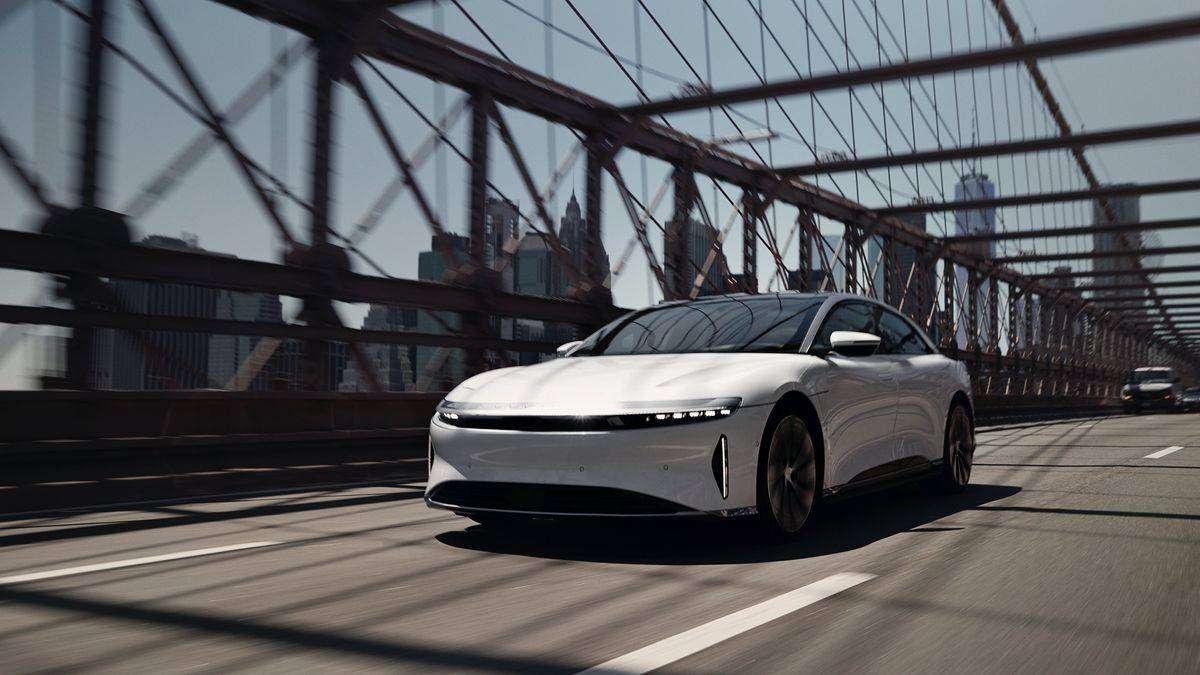The Lucid Air has received another highly positive review, this time in comparison to the Mercedes EQS. The review is from Lawrence Ulrich at the New York Times. Right off the bat Lucid's ground-up EV model is given a big vote of confidence, with Ulrich describing how Mercedes, as it transitions for internal combustion to electric powertrains, will have to serve two distinct groups of customers simultaneously. Not ideal, especially when, as Ulrich writes, Mercedes is essentially building an EV business to kill off its ICE one. By contrast, Lucid's from-day-one focus on electric vehicles gives the company a clarity of purpose while legacy automakers juggle the vehicles they've always sold with the inevitable electrified future. As Ulrich puts it, "A century-plus of experience in building internal-combustion cars doesn’t necessarily mean squat."
Lucid Air vs. Mercedes EQS
There are a few areas where the Mercedes receives praise such as the beautiful ride (designed to complement the S-Class after all) and how quiet the cabin remains with no internal combustion article to hide bumps and squeaks. From there, however, the Lucid powers ahead leaving the Mercedes in its silently-stirred dust. First, there's the styling. Mercedes says that the EQS is the world's most aerodynamic production car with a drag coefficient of just 0.20 (the Lucid's is 0.21) but the way the cars achieve such low numbers is handled totally differently. The Air is dramatic, even Citroenesque, while by comparison the EQS is shaped like an egg, with compromised headroom for taller passengers in the back seat.

Of course there's then the matter of range, with the EQS capable of 350 miles to the Lucid's 500+, though Ulrich is confident that the Benz is capable of exceeding this EPA rating. Interestingly, the test describes this as a further two and a half hours of highway driving for the Air before it needs to stop for a charge. Driving dynamics is another area where the Lucid shines, even against the EQS's serene road manners, with the Californian car bringing an excellent blend of comfort and control despite the inherent EV weight. Ulrich enjoys the Air's regenerative braking system, saying:
Even rushes into corners rarely require touching the brake pedal, only a well-timed lift off the accelerator.
Defined By Their Interiors
If there's one area where the Mercedes draws the most criticism it's the interior, which is used as a metaphor for Ulrich's feelings about the EQS as a whole. He argues that the Benz is mostly "showboating gadgetry" compared to the thoughtfully-designed Air which truly advances the electric vehicle as a means of transportation. He feels that the 56-inch Hyperscreen in the EQS is overkill, and that what customers want is exceptional range, not 64 different colours of ambient lighting. The Air, by comparison, features an interior that complements the rest of the car without overwhelming it. While Mercedes is touting the EQS as one of the most important models in its history, Ulrich believes that it may end up as a mere footnote.


So there we have it; another glowing review for the Lucid Air, and a handy victory against competition from one of the world's most prestigious auto manufacturers. As Ulrich says, the Lucid Air's record-breaking range isn't even the main event; it's the technology that the company has developed. Comparing the Air's electric motors to the Corvette's drivetrain is extremely telling of Lucid's achievements: the LT2 V8 in the Vette makes 495 horsepower and when paired with the transmission weighs 800 lbs. Lucid's e-motor, gearing and all, makes 650 horsepower, weighs 163 lbs. and can fit in a carry-on bag. Also, says Ulrich, it packs triple the power density (horsepower per pound) over Tesla's best offering. Talk about putting your best foot forward.
Images by Lucid Motors and Mercedes-Benz licensed by CC BY 2.0.
James Walker is an automotive journalist at Torque News focusing on Lucid Motors. If it's got wheels he's interested, and he's looking forward to seeing what kind of cars the EV revolution brings us. Whether it's fast, slow, new, or old, James wants to have a look around it and share it in print and on video, ideally with some twisty roads involved. You can connect with James on Twitter, Instagram, and LinkedIn.






Comments
Mercedes and Porsche are not
Permalink
Mercedes and Porsche are not really trying to beat Lucid and Tesla. They are trying to bring all of the comfort, high build and materials quality, reliability, and tech of their gas powered models over to their own new EV counterparts. So that loyal Mercedes and Porsche/Audi customers will stay with them. Tesla, Lucid, and Rivian are trying to build clean slate EVs that are simply better than the ICE vehicles that still dominate new model sales. So new EV buyers, and ones moving upmarket will likely prefer the new EV brands. But for their first competitive EV efforts, Mercedes, Porsche, and Audi have done a good job. Although, I'd still still choose the American innovators/upstarts every time.